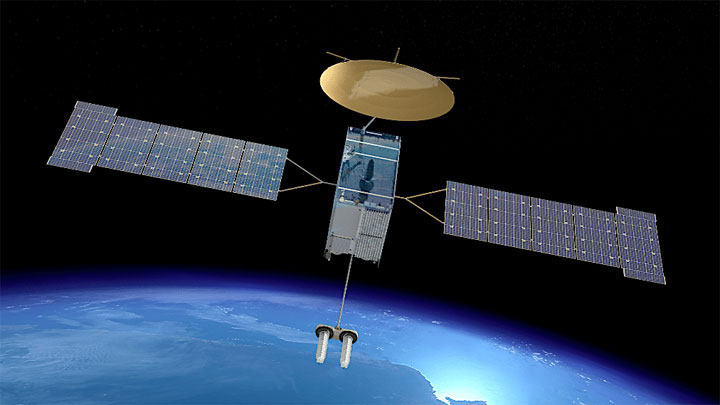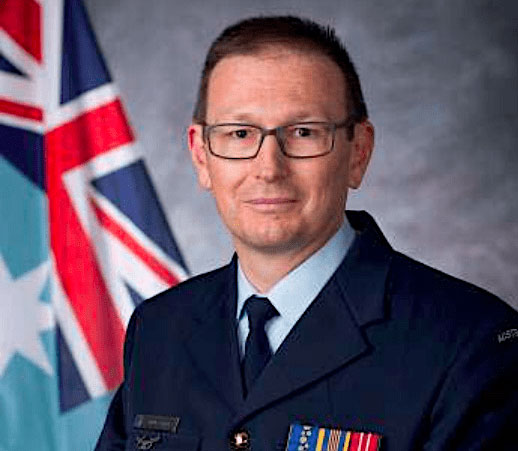 (Source: Lockheed Martin Australia)
(Source: Lockheed Martin Australia)
PARIS — The Australian Defence Force (ADF) will open what is likely to be months of negotiation with Lockheed Martin Australia7 to ‘clarify and improve’ Lockheed’s bid for a multibillion-dollar military satcom network that puts a high priority on domestic autonomy and the participation of Australian subcontractors.
The Australian government announced April 3 that Lockheed had been selected a the preferred tenderer for the Joint Project 9102 Phase 1 program, which includes at least two satellites in geostationary orbit, a network of ground stations and two network operations centers.
Lockheed’s bid was selected over competing tenders from Airbus Defence and Space, Boeing, Northrop Grumman and Australia’s Optus.
 Air Vice-Marshal David Scheul, head of Air Defence and Space Systems, Australian Defence Force. (Source: ADF)
Air Vice-Marshal David Scheul, head of Air Defence and Space Systems, Australian Defence Force. (Source: ADF)
In an April 3 statement, Air Vice Marshal David Scheul, head of ADF’s Air Defence and Space Systems Division, said the project would “deliver Australia’s first sovereign-controlled satellite communication system over the Indo-Pacific Ocean regions.”
JP 9102 high-level goal, like that of Britain’s ongoing Skynet 6 procurement, is for military control over military assets. Australia’s current milsatcom system is a military payload on fleet operator Optus’s Optus C1 satellite, and on Intelsat’s IS22. Australia is also a partner nation in the U.S. Wideband Global Satcom (WGS) constellation, having financed one of the WGS satellites.
It remains unclear how much of Lockheed’s JP 9102 bid will need to be renegotiated before a final contract is signed. The ADF statement said Lockheed “will progress to the next stage of the Defence procurement process, which includes engaging in collaborative tender clarification and improvement activities.”
ADF had been clear to all bidders that in addition to boosting the “resilience, agility and flexibility” of Australia’s milsatcom capacity, JP 9102 should sufficient involvement of Australia’s domestic industrial base to enable the long-term viability of multiple small- and midsize companies.
In an April 3 statement, Lockheed Martin Australia said its JP9102 teams includes Inovor Technologies, EM Solutions, AV-Comm, Linfox, Shoal Group, Ronson Gears, Calytrix Technologies, Conscia, Clearbox Systems, DXC and Blacktree Technology to deliver ground and control segments and beyond.”
Lockheed had won support for its bid from the government of the state of Victoria by promising to make Victory “the engineering and technical hub” for the JP 9102 program, “an investment that will create more than 200 advanced space industry jobs in the state,” Lockheed said.
All five bidders had created JP9102 teams that worked for months on the bid. Each assembled its own list of subcontractors. How much the bidders each spent is unknown.
Also unclear is whether all of it will now be scrapped, on the assumption that Lockheed and ADF will reach final agreement on a contract.
That is especially true in the current environment, when multiple NATO nations are still weighing what their military satellite communications architectures should look like in the future.
All of them have been watching Ukraine and the use of satcom and satellite Earth observation in that war. None of them, except the United States, has settled on a future design or made a decision about a low Earth orbit constellation. The European Commission expects to secure support from European Union militaries for its Iris2 network, which includes a global low Earth orbit constellation.
Airbus issued this following statement that reflect future possibilities.
“While we are disappointed not to be down selected for the JP9102 tender, Airbus has an enduring commitment to working with the Commonwealth to address its capability needs across all our business lines. We look forward to building on our presence in the country together with our customers, partners and government stakeholders.
“We also see continuing opportunities in the space segment in Australia, for both civil and military capabilities, and remain committed to partnering with Australian industry to bring solutions to the needs of these customers,” Airbus said.
Read more from Space Intel Report.
